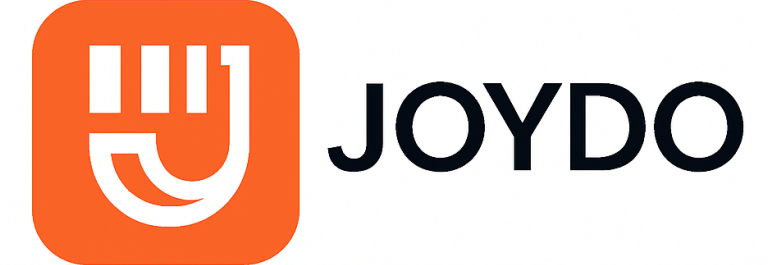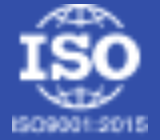The Internet of Things: Weaving a Smarter World, One Connected Device at a Time
The term "Internet of Things," often abbreviated as IoT, has moved far beyond tech buzzword status. It represents a fundamental shift in how we interact with the physical world, driven by the pervasive connection of everyday objects to the internet. This vast network of connected devices – from smart thermostats and wearables to industrial sensors and autonomous vehicles – is quietly revolutionizing industries, enhancing efficiency, and reshaping our daily lives. Understanding the IoT ecosystem, its current impact, and future potential is crucial for businesses and individuals navigating our increasingly digital future.
Beyond Hype: The Engine of the Modern IoT
At its core, the Internet of Things involves embedding sensors, software, and network connectivity into physical objects. These IoT devices collect vast amounts of sensor data – temperature, location, movement, status, and more. This data is transmitted, often wirelessly via protocols like Wi-Fi, Bluetooth, Zigbee, or cellular (including emerging 5G networks), to centralized platforms or the cloud. Powerful data analytics tools then process this information, extracting meaningful insights, enabling automation, and triggering actions – sometimes with minimal human intervention through edge computing, where processing happens closer to the data source.
Transforming Industries and Experiences: The Tangible Impact of IoT Technology
The IoT applications landscape is incredibly diverse, demonstrating the value of IoT across sectors:
Smart Homes & Consumer IoT: Connected home devices like security cameras, voice assistants (Amazon Alexa, Google Home), smart lighting, and appliances offer unprecedented convenience, energy savings (smart energy management), and security. Wearable tech tracks health metrics, fostering proactive wellness.
Industrial IoT (IIoT): This is arguably where IoT delivers the most significant ROI. Industrial IoT sensors monitor machinery health in real-time, predicting failures before they cause costly downtime (predictive maintenance). They optimize supply chains, track assets, improve worker safety, and enable more efficient, automated manufacturing processes.
Smart Cities: IoT solutions are making urban centers more livable and sustainable. Applications include smart traffic management to reduce congestion, intelligent street lighting that adjusts based on activity, optimized waste collection routes, improved air and water quality monitoring, and enhanced public safety systems.
Healthcare (IoMT - Internet of Medical Things): Remote patient monitoring using IoT medical devices, connected implants, and wearable sensors allows for continuous health tracking, enabling earlier interventions, personalized treatment plans, and reduced hospital readmissions, improving overall healthcare outcomes.
Agriculture (Smart Farming): IoT in agriculture involves sensors monitoring soil moisture, nutrient levels, and crop health, combined with automated irrigation systems and drone surveillance. This enables precision agriculture, optimizing resource use (water, fertilizers) and maximizing yields.
Navigating the Connected Future: Challenges and Considerations
Despite its immense promise, the Internet of Things landscape presents significant challenges that must be addressed:
Security: The sheer number of connected endpoints dramatically expands the potential attack surface. Securing IoT devices and the data they generate against breaches, hacking, and malware is paramount. Robust IoT security protocols and regular updates are non-negotiable.
Privacy: The constant data collection inherent in IoT technology raises critical questions about user data privacy. Clear policies on data ownership, usage, consent, and anonymization are essential to build and maintain trust.
Interoperability & Standards: With countless manufacturers and diverse IoT platforms, ensuring different devices and systems can communicate seamlessly remains a hurdle. Wider adoption of open IoT standards and protocols is needed.
Data Management & Complexity: The massive volume, velocity, and variety of IoT data generated require sophisticated data analytics infrastructure and expertise to manage, store, and extract actionable value effectively.
Infrastructure & Cost: Deploying large-scale IoT networks, especially leveraging 5G or dedicated low-power networks, requires significant investment in infrastructure. The cost of sensors, connectivity, and platform management can also be barriers.
The Future Connected: Where IoT is Headed
The evolution of the Internet of Things shows no signs of slowing. Key trends shaping its future include:
Convergence with AI & Machine Learning: Artificial Intelligence (AI) and Machine Learning (ML) are becoming integral to IoT, enabling smarter data analysis, predictive capabilities, autonomous decision-making, and more personalized user experiences.
5G & Advanced Connectivity: The rollout of 5G networks provides the high bandwidth, ultra-low latency, and massive device connectivity essential for demanding IoT applications like autonomous vehicles and real-time industrial automation.
Edge Computing Growth: Processing data closer to its source via edge computing reduces latency, minimizes bandwidth usage, enhances privacy, and allows for faster, localized decision-making, critical for time-sensitive applications.
Enhanced Focus on Sustainability: IoT is increasingly leveraged for environmental monitoring, optimizing energy grids (smart grids), reducing resource consumption, and promoting sustainable practices across industries.
Embracing the IoT Opportunity: A Call for Strategic Integration
The Internet of Things is not merely about connecting gadgets; it's about harnessing data to create intelligent systems that solve real-world problems, drive efficiency, and unlock new possibilities. For businesses, strategically integrating IoT solutions can lead to significant competitive advantages through operational optimization, innovative service offerings, and deeper customer insights. For society, it promises smarter cities, improved healthcare, sustainable resource management, and enhanced convenience.
Navigating the complexities of security, privacy, and interoperability is essential for sustainable growth. As IoT technology continues to mature, fueled by advancements in AI, 5G, and edge computing, its potential to transform our world positively is truly boundless. The truly smart future is one where the physical and digital seamlessly converge, powered by the ever-expanding Internet of Things ecosystem. Understanding and strategically engaging with this connected reality is no longer optional; it's the pathway to progress.









